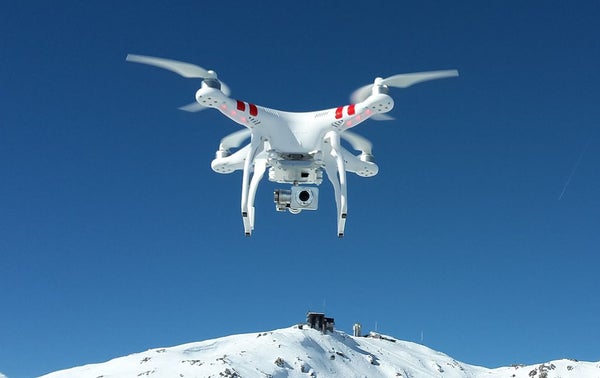This article was published in Scientific American’s former blog network and reflects the views of the author, not necessarily those of Scientific American
Reports of unmanned aircraft interfering with firefighters, buzzing commercial airliners and disrupting airport traffic are on the rise. Now politicians and law enforcement are vowing to strike back at these swarms of hobbyist drones through GPS tracking technology that can locate and even create an invisible fence to control the movement of rogue flyers.
Counter-drone measures have included New York police using a microwave-based system to try to track a drone spotted near Times Square and send it back to its operator, Reuters reported Thursday. News of this test came a day after New York Sen. Chuck Schumer proposed that drone makers be required to include software that uses GPS to track a drone’s position and limit its movement. Drone makers would install this geo-fencing technology in their aircraft to keep unlicensed unmanned aircraft away from major runways and other places where they threaten safety. The Democratic senator, who recently made headlines for his opposition to the Iran nuclear deal, has vowed to add this “no fly zone” requirement to the Federal Aviation Administration (FAA) Reauthorization Bill this fall. The bill’s overall purpose is to set the FAA’s funding levels and policy priorities.
Pilot reports of unmanned aircraft sightings have increased dramatically over the past year, from a total of 238 in all of 2014 to more than 650 by August 9 of this year, according to a recent
On supporting science journalism
If you're enjoying this article, consider supporting our award-winning journalism by subscribing. By purchasing a subscription you are helping to ensure the future of impactful stories about the discoveries and ideas shaping our world today.
FAA report. That’s only a fraction of the hundreds of thousands of unlicensed drones roaming the skies. Still, just a handful of these aircraft can create major problems. Firefighters battling wildfires in southern California last month were forced to ground their operations on several occasions for fear of midair collisions with unauthorized drones spotted in the area. One unmanned aircraft ended up in the Obamas’ backyard earlier this year.
The rogue drone problem—which includes mid-air collisions with passenger aircraft, or even the threat of this happening—is only going to get worse before it gets better. The number of drones sold annually around the world is expected to hit at least 1.4 million by 2025, according to Lux Research. This is a conservative estimate, especially as high-profile tech companies see new opportunities to exploit the unmanned aerial vehicle market. Chipmaker Qualcomm, for instance, recently acquired a flight software company and plans to announce its drone strategy next month, the tech news site Re/Code reported Thursday. It’s unclear whether drones with Qualcomm chips will be flown for commercial or hobbyist purposes until the company releases more details.
The FAA permits drones to fly within U.S. airspace with special permission, a stopgap policy while the agency figures out a long-term solution. The government has so far doled out more than 500 of these exemptions to farmers, railroads, security services and medical facilities seeking to use unmanned aircraft for commercial purposes. The main caveat is that they must register with the FAA and agree to stay several kilometers from airports and heliports. More of these free passes are likely on the way, as Amazon, Google and other companies experiment with the possibility of delivering packages via drone airmail. Google, which recently rebranded itself as Alphabet, reportedly isn’t even waiting for such an exemption. The company has been testing its Project Wing drone delivery program over private land in rural California using NASA’s Certificate of Waiver or Authorization (COA), a program originally intended for government agencies, according to The Guardian.
Hobbyist drone regulation is not so easily managed. It is legal for a person to buy a model aircraft weighing less than 25 kilograms and fly it within the operator’s line of sight, according to a 2007 FAA policy statement. And recreational flyers themselves tend to be dismissive of their aircraft as a threat, given that most of them are small, can’t stay in the air for more than hour and can carry only light payloads, such as a camera and a couple of antennas, says Maryanna Saenko, a Lux research analyst. “The real risk is their sheer number,” she adds. “We’re moving to a world were there will be millions of these things.”
Schumer’s geo-fencing technology isn’t the answer. Commercial drone operators are sure to back the new rule because it seeks to crack down on the more reckless users of the technology. But hobbyists, being the curious and experimental souls that they are, will probably find ways to hack, disable or block the proposed software. The first step is for the FAA to update its drone regulations for both recreational remote-control pilots and businesses alike so that the rules are clear. Tracking ownership of these devices might also help catch some nuisance drone operators. The FAA’s best bet, however, is to make sure these hobbyists know what they can and cannot do and develop specific penalties for breaking those rules.
